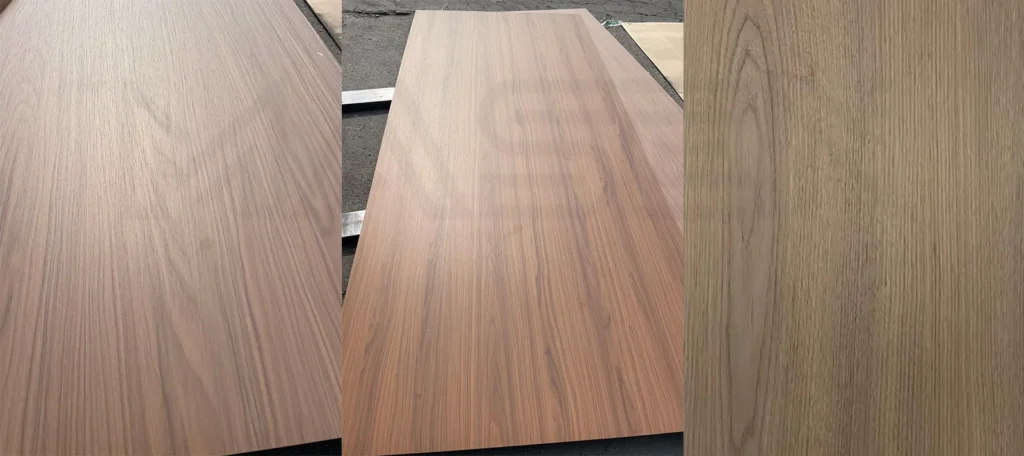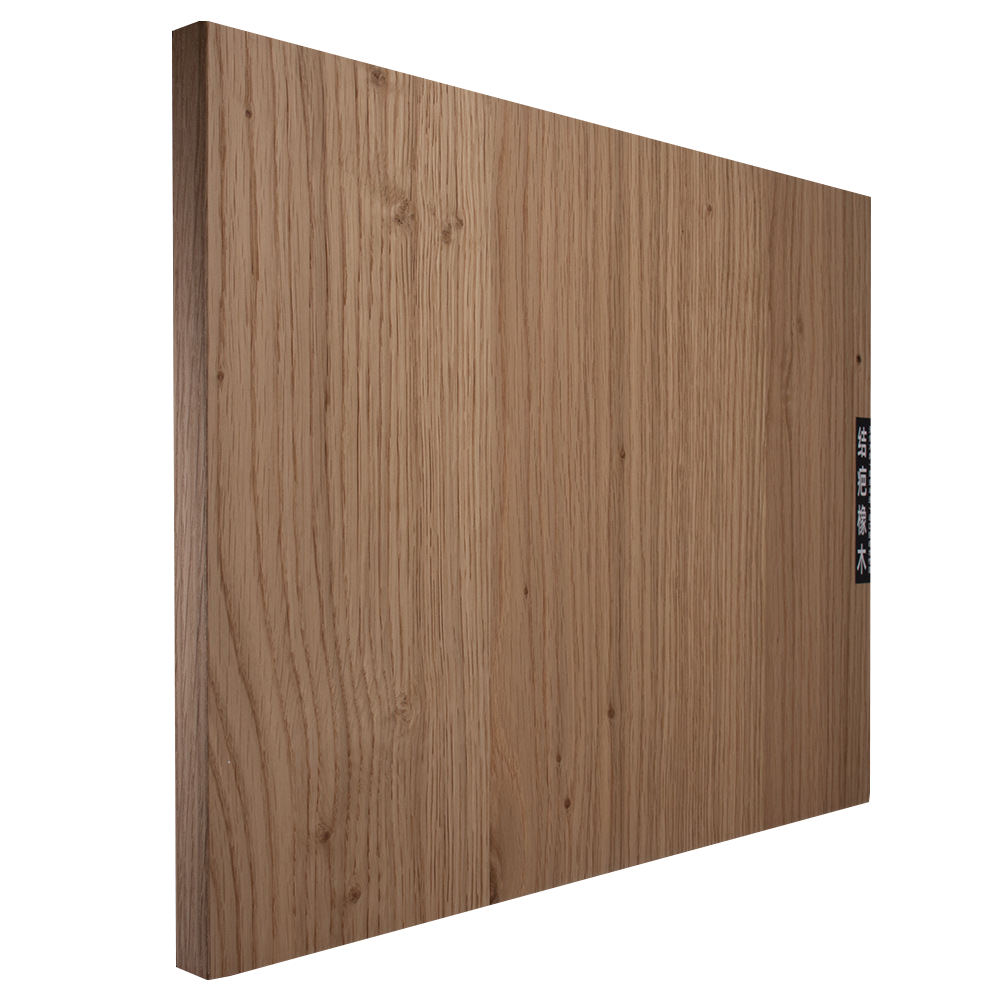Melamine plywood and synchronous plywood are two common types of engineered wood panels, differing in production processes, performance characteristics, and application scenarios. Below is a detailed comparison between the two:

I. Definitions and Core Processes
1. Ordinary Melamine Plywood
- Definition:
Made by laminating melamine-impregnated paper (paper soaked in melamine resin and dried) onto a plywood substrate (composed of multiple layers of wood veneers bonded together), followed by hot-pressing to form the panel. - Core Process:
Substrate preparation → Melamine paper lamination → Hot-pressing and curing → Surface treatment (e.g., sanding, edge trimming).- The melamine paper must be pre-impregnated with resin and dried to create a decorative layer with certain hardness and wear resistance.
2. Synchronous Plywood (Synchronous Embossing Plywood)
- Definition:
Also using plywood as the substrate, but the decorative paper’s texture synchronizes with the pattern of the underlying steel plate, creating a “stereo matching pattern” that highly resembles natural wood grain, also known as “synchronous embossing plywood.” - Core Process:
Substrate preparation → Application of decorative paper (with special texture) → Synchronous hot-pressing (precise alignment of decorative paper texture with steel plate patterns) → Surface treatment.- The key lies in the perfect matching of the decorative paper texture with the steel plate mold during hot-pressing, forming a three-dimensional tactile effect (e.g., simulating the pores and annual rings of wood).
II. Performance Comparison
| Aspect | Ordinary Melamine Plywood | Synchronous Plywood |
|---|---|---|
| Surface Texture | – Flat texture with fixed decorative paper patterns; – Smooth to the touch, no three-dimensional texture. | – Texture synchronized with the steel plate mold, strong three-dimensional effect; – Tactile feel simulates the natural unevenness of wood (e.g., bark texture, annual ring undulations). |
| Realism | Patterns are printed or fixed, with moderate realism and lacking the “authenticity” of natural wood. | Texture fully synchronized with embossing, extremely high realism, close to the tactile and visual effects of solid wood. |
| Wear Resistance | The melamine layer is highly rigid, with good daily wear resistance, but the flat surface may show monotony after long-term friction. | The embossed surface enhances wear resistance (micro-buffer structures between textures), and three-dimensional patterns can mask minor scratches. |
| Environmental Friendliness | Depends on the substrate adhesive (e.g., E0, E1 grade adhesives) and formaldehyde emission of melamine paper, with overall controllable environmental performance. | Similar process to ordinary panels; environmental friendliness mainly depends on the substrate and decorative paper, generally comparable to ordinary panels. |
| Production Cost | Relatively simple process, lower costs for decorative paper and steel molds, affordable price. | Requires customized high-precision synchronous embossing steel plates, high mold costs, complex production process, usually 10%–30% more expensive than ordinary panels. |
III. Application Scenarios
1. Ordinary Melamine Plywood
- Advantages: Low cost, flat surface, easy to clean; suitable for scenarios with low decorative requirements.
- Applications:
- Furniture manufacturing: Basic cabinets (wardrobes, kitchen cabinets, desks, etc.).
- Packaging materials: Wooden boxes, pallets, etc.
- Interior decoration: Partition walls, ceiling bases, etc.
2. Synchronous Plywood
- Advantages: High realism, premium texture; suitable for natural-style or high-end decoration scenarios.
- Applications:
- High-end furniture: Solid wood-style wardrobes, sofa frames, coffee tables, etc.
- Interior decoration: Feature walls, wall panels, flooring (requires additional wear-resistant layers).
- Custom furniture: Custom cabinets imitating natural wood grains (e.g., walnut, oak).
IV. How to Choose?
Choose Ordinary Melamine Plywood When:
- On a tight budget and prioritizing cost-effectiveness.
- Low decorative requirements, with a focus on practicality (e.g., storage furniture, temporary renovations).
Choose Synchronous Plywood When:
- Seeking the texture of natural wood grain and a premium effect (e.g., Nordic-style, new Chinese-style decorations).
- Used for visible surfaces requiring enhanced overall aesthetics.
V. Extended Knowledge: Technical Highlights of Synchronous Technology
- Key Equipment: High-precision synchronous embossing machines to ensure precise alignment of decorative paper and steel plates during hot-pressing (error <0.1mm).
- Types of Decorative Paper: Typically uses embossed decorative paper (pre-pressed texture) or plain paper with printed textures, combined with steel plate molds for stereo pattern matching.
- Market Trend: Driven by consumers’ demand for natural textures, synchronous plywood is increasingly used in custom furniture, especially in European and high-end domestic markets.


